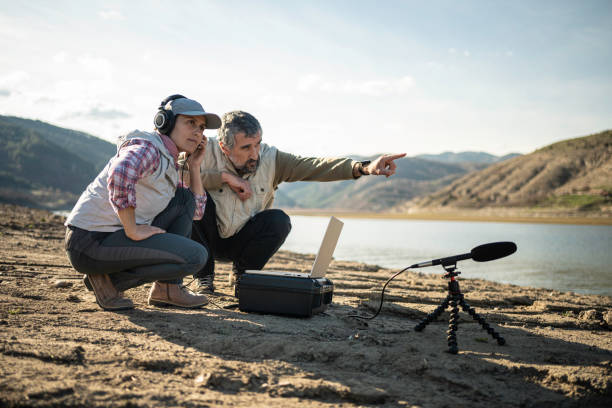Distinctive Echoes: Unraveling the Mystique of Bioacoustics in Modern Music
Introduction: Delve into the realm of bioacoustics as we explore its influential role in modern music. This article provides a comprehensive journey through the history of this fascinating trend, its current developments, and its profound impact on contemporary music.

A Symphony of Nature: Historical Context of Bioacoustics
Bioacoustics, the study of sound produced by or affecting living organisms, has been around since the dawn of time. It wasn’t until the 20th century, however, that it began to intertwine with music. Composers like Olivier Messiaen were among the first to mimic bird songs and animal calls in their compositions, sparking an enduring interest in the incorporation of natural sounds into music.
Current Wave: Fresh Sounds in the Bioacoustic Landscape
Today, the use of bioacoustics in music is seeing a resurgence. Artists are leveraging advancements in technology to capture and manipulate the sounds of nature, creating a sonic landscape that’s both novel and nostalgic. From the ambient music of Brian Eno to Björk’s innovative soundscapes in her album “Biophilia”, bioacoustics is becoming a significant feature in the modern music soundscape.
Impactful Echolocation: Bioacoustics Significance in Music
The influence of bioacoustics in music goes beyond aesthetics. It heightens listeners’ sensory experience, connecting them to the natural world in an immersive and profound way. The use of bioacoustics also promotes environmental awareness, illuminating the beauty and fragility of nature through sound. It’s a form of artistic activism that resonates deeply with many listeners.
Reception: The Audience’s Attunement to Bioacoustic Music
The reception of bioacoustic music has been largely positive, with many listeners appreciating its unique blend of artistry and environmental consciousness. It offers a refreshing divergence from traditional music genres, allowing listeners to experience the natural world in a new and captivating way. As a result, bioacoustic music is gaining traction and popularity among a wide range of audiences.
The Future Symphony: Bioacoustics and the Evolution of Music
The trend of bioacoustics in music shows no signs of slowing down. As technology continues to advance, artists will have even more tools at their disposal to capture and incorporate natural sounds into their compositions. Coupled with the growing public interest in environmental issues, the future of bioacoustic music is full of potential for exciting, innovative developments.
In conclusion, the incorporation of bioacoustics into modern music offers an intriguing exploration of the intersection between nature and artistry. Its rising popularity signals a move toward more environmentally-conscious music, creating a distinct and influential genre that resonates with listeners on a deeply emotional level. The unique sounds of bioacoustic music offer a refreshing change of pace in the music industry, proving that sometimes, the most original and impactful sounds come straight from nature itself.





